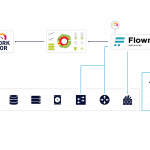How Can Global Fashion Brands Reach More Buyers With Online Wholesale Platforms?
Scaling wholesale is hard. Global fashion brands want broader reach without ballooning travel, samples, and time on the road. A modern fashion wholesale platform solves that by putting your assortments, pricing, and orders where buyers already are online. With the right fashion wholesale software, brands can meet independent retailers worldwide, run omnichannel B2B, and turn interest into orders faster.
This guide explains what online wholesale platforms are, why brands are moving to them, and how to use wholesale ecommerce software for fashion to expand reach. We will also cover strategies, analytics, and a quick checklist for choosing a global wholesale platform that fits your business.
What Are Online Wholesale Platforms?
Online wholesale platforms are digital environments where brands present collections to vetted retailers, manage assortments, and convert interest into orders. They usually take two forms:
- B2B marketplaces that attract thousands of retailers who search, discover, and buy from multiple brands in one place.
- SaaS platforms like JOOR that offer private digital showrooms, order management, and ERP integrations, while also connecting you to a large, global buyer network.
How JOOR helps: Keep line sheets current, update availability in real time, and invite buyers with a simple link. Accept orders 24/7, including from buyers who are offsite, and let sales teams capture orders on iPads during in-person appointments. Everything stays in one connected workflow so interest turns into orders without losing momentum.
Why Global Fashion Brands Are Turning to Online Wholesale Platforms
Traditional wholesale is limited by geography and calendars. You meet the buyers who can travel, during a short window, in one or two cities. After the show, follow-ups become a game of PDFs and email threads.
What is changing is buyer behavior and channel performance. McKinsey reports that e-commerce is now the top revenue-generating B2B sales channel for companies that offer it, and more buyers are comfortable placing very large orders through self-serve or remote channels, including $500,000 plus transactions.
At the same time, U.S. B2B ecommerce is surging, with industry trackers forecasting volumes in the multi-trillion range and strong marketplace growth. On the cost side, exhibit space alone typically runs about $100 to $150 per square foot, and space is often only a third of the total show bill once you add build, travel, and staffing.
Online platforms remove those constraints:
- Always on. Your showroom is open year-round, across time zones.
- Instant updates. Price changes, delivery windows, and sold-out styles are visible immediately.
- Scalable outreach. Invite hundreds of targeted retailers to your JOOR digital showroom and turn interest into orders year-round.
- Lower cost of growth. Fewer samples and less travel make it practical to test new regions and smaller accounts.
Buyer expectations are already digital. Retailers want to browse, favorite, and build carts online. Meeting that expectation through a virtual showroom or B2B marketplace lets you grow reach without adding the same overhead you would need for more market weeks and bigger booths.
How Online Wholesale Platforms Help Brands Reach More Buyers
Before we get into the how, here’s the simple idea: a good online wholesale platform works like an always-open showroom for your brand. Buyers across regions can find you, learn your story, and start a cart in minutes. Instead of waiting for market week or a rep visit, boutiques and small chains discover your line through search, filters, and rich product pages. That opens doors in places you would rarely reach in person and sets you up for warmer, more productive conversations.
Connecting With Independent Retailers Globally
A strong wholesale fashion platform puts your collection in front of qualified boutiques, specialty stores, and regional chains that you would not meet in person. Filters by category, price point, and region help the right retailers find you. For smaller territories, this digital discovery is often the only practical path to entry.
Leveraging Marketplace Visibility
Marketplaces reward complete listings, rich imagery, and consistent availability. That visibility compounds. The more you optimize your presence, the more retailer searches you appear in. New accounts find you organically, and your rep team spends time on warm outreach instead of cold calls.
Enabling Omnichannel B2B Sales
Great platforms let a buyer start online, hop on a video appointment, and finish the order later. Reps can curate looks, share carts, and capture orders on the spot. That is a true omnichannel for wholesale; everything lives in one system, not scattered across spreadsheets and PDFs.
Enhancing Brand Storytelling
A digital showroom supports short videos, outfit pairing, and lookbook-style curation. You can tell the collection story in a way that printed line sheets cannot. That narrative helps new retailers understand your positioning quickly, which is critical when you are expanding to new regions.
Strategies Global Brands Can Use to Maximize Reach
Here are the practical strategies global brands use to reach more of the right market.
Optimizing Product Listings
Use clear titles, fabric and fit notes, MSRP guidance, and clean images with consistent backgrounds. Group looks by delivery window and capsule so buyers can build assortments fast. Treat every product page like a mini pitch.
Using Data to Target New Markets
Start with your best-selling categories and look for similar retailer profiles in underpenetrated regions. If mid-price knitwear sells in coastal boutiques, filter for comparable stores in similar climates and invite them to a virtual walk-through. Data beats guesswork.
Leveraging Platform Integrations
Connect your ERP, PIM, or inventory system so availability is always accurate. Integrate payments and invoicing where possible. The fewer manual steps between a buyer’s intent and a confirmed order, the more conversions you will see.
Leveraging Data & Analytics from Wholesale Platforms
The strongest platforms surface real-time insights into browsing and buying behavior: which styles get the most views, which retailers have abandoned carts, which regions respond to certain price bands, and which deliveries are trending. With these insights, you can:
- Plan inventory by pushing depth into proven styles and trimming slow movers.
- Forecast trends earlier in the season using view-to-order ratios and wishlist activity.
- Improve margins by nudging minimums, offering sensible bundles, or adjusting pricing in markets that show stronger demand.
JOOR makes it simple to run allocation and budget reports across all orders so your team stays on target, and to align production with demand by tracking assortment breakdowns early and adjusting schedules proactively.
For a deeper dive, read about the benefits of wholesale fashion software, and explore JOOR as a global wholesale platform option that supports scale without extra overhead.
Choosing the Right Wholesale Platform
Use this checklist when evaluating platforms:
- Scalability: Can it handle seasonal surges and a growing retailer base without slowing down?
- Integrations: Does it connect to your ERP, PIM, inventory, and accounting stack?
- Buyer network: Is there meaningful global reach into the types of retailers you want?
- Ease of use: Can reps and buyers learn it fast, and can you share a showroom with a link?
- Analytics: Do you get actionable insights, not just dashboards?
- Security & compliance: Buyer vetting, data protection, and permission controls.
- Total cost: Transparent pricing that scales with your actual usage, not surprise fees.
If you are shortlisting, start with a pilot. Onboard one region, compare order velocity and rep hours saved, then roll out globally once the impact is clear.
FAQs
What are the best online wholesale platforms for fashion brands?
The “best” depends on your goals. If you want end-to-end tools plus global reach, consider a global wholesale platform like JOOR that blends digital showrooms, orders, integrated payments and analytics with a large buyer network. If marketplace discovery is your top priority, compare buyer traffic and category fit before you decide.
How do fashion brands find international buyers online?
Use platform search filters to target by region, store type, and price point. Run virtual appointments during each collection drop, then follow up with curated carts. Data from views and wishlists tells you which markets to pursue next.
Can small fashion brands use B2B marketplaces like JOOR?
Yes. Smaller brands benefit from built-in discovery, standardized order workflows, and lower upfront costs. Start with a tight assortment, perfect your listings, and grow into new regions as the data supports it.







